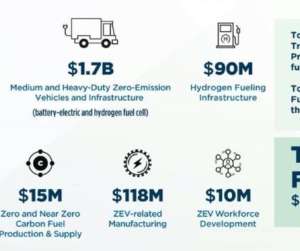California Energy Commission approves $2.9B investment for zero-emission transportation infrastructure
Green Car Congress
DECEMBER 15, 2022
The 2022-2023 Investment Plan Update increases funding for the CEC’s Clean Transportation Program by 30 times compared to 2019 with an additional $2.4 —CEC Lead Commissioner for Transportation Patty Monahan. 15 million zero- and near-zero-carbon fuel production and supply. $15 15 million for low-carbon fuels. $10











































Let's personalize your content